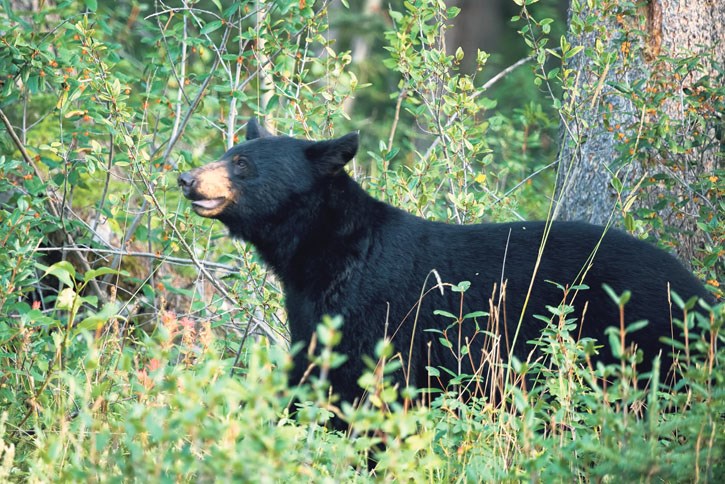CANMORE – A bear warning is in place for the south side of the Bow Valley in Canmore as buffalo berries are ripening.
Provincial wildlife officials say there are ongoing reports of black bears on the south side of the Bow River, including females with cubs, as well as occasional reports of grizzly sightings.
Jay Honeyman, a human-wildlife conflict specialist with Alberta Environment and Parks, said he doesn’t believe the berry crop will be quite as good as last year, but there’s enough to hold bears in the valley bottom well into August.
“There’s quite a bit of buffalo berry on the south side, which is bringing in bears and we anticipate more coming in,” he said.“There’s quite a bit of human use in the area as well, so we want to give people the head’s up and help reduce the risk.”
The provincial bear warning extends from the park boundary of Banff National Park to the Three Sisters area – an area that’s busy with runners, mountain bikers and dog walkers.
Grizzly bears in this region depend heavily on berries to put on weight for hibernation. If crops allow, grizzlies can eat up to 250,000 buffalo berries a day in order to store enough fat reserves for winter.
As human use in the valley increases, including in designated wildlife corridors and habitat patches, so does the probability of encountering wildlife and the likelihood of serious conflicts.
Honeyman said people should be thinking about bears and taking necessary precautions like travelling in groups, making lots of noise, carrying and knowing how to use bear spray and keeping dogs on leash at all times.
“If we can get people to honour the intent of corridors and habitat patches and stay on the designated trails so the rest of the corridor is available to wildlife, then wildlife don’t need to put up with people everywhere,” said Honeyman.
“If people stay on the trails, human use becomes more predictable for wildlife rather than having use scattered throughout the corridor all day and night. If people are running their dogs all over the place, that’s not good for wildlife.”
The technical working group of the Bow Valley human-wildlife coexistence task force made 28 recommendations on changes that can be made on provincial, municipal and federal lands to reduce the probability and severity of human-wildlife encounters.
There was consensus among wildlife managers from the province and Parks Canada on the human-use co-existence technical working that wildlife needs to be discouraged from using the developed areas.
One of the many recommendations included removal of natural attractants, including buffalo berries.
Honeyman said Alberta Environment and Parks continues to work with the Town of Canmore to remove buffalo berries from within the footprint of the municipality.
“One of the places we can’t go and cut down berry bushes is on people’s own private property, and we’re trying to encourage residents to cut them,” he said, pointing to Rundleview and Peaks of Grassi neighbourhoods as examples.
“It’s this whole idea of discouraging wildlife from being in town and discouraging them from using the developed areas.”
The technical working group also recommended proactive seasonal closures, allowing visitors and residents to the plan their recreation while allowing wildlife to learn predictable patterns of human use.
“We’d like to get to a place to leave it open with responsible use, but closures are an option,” said Honeyman.




